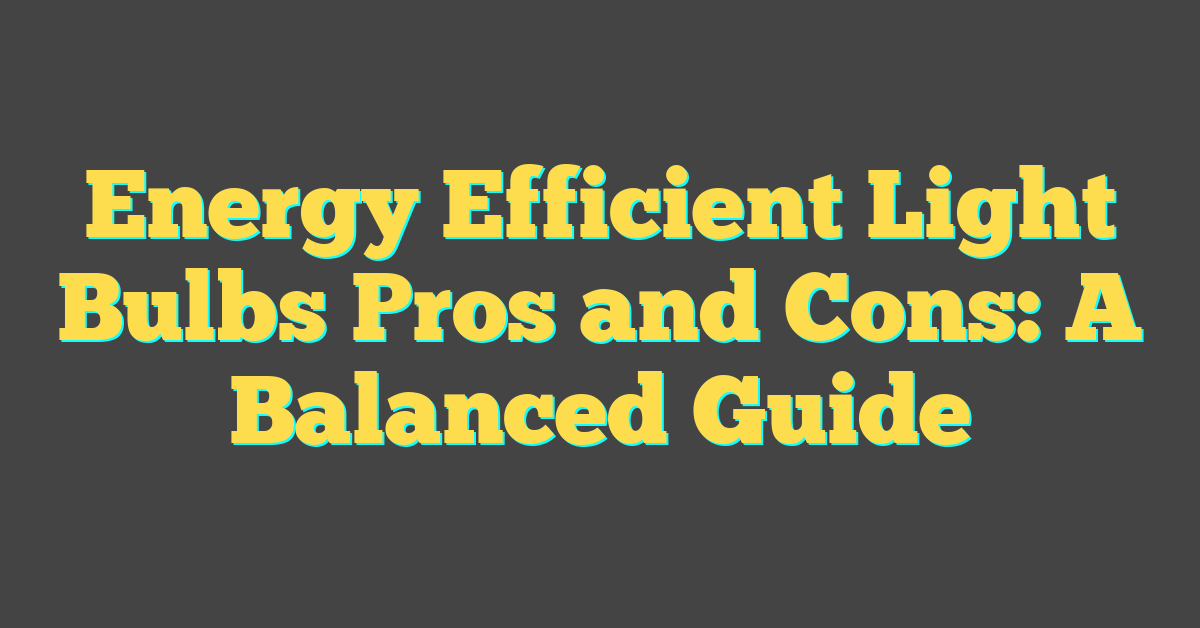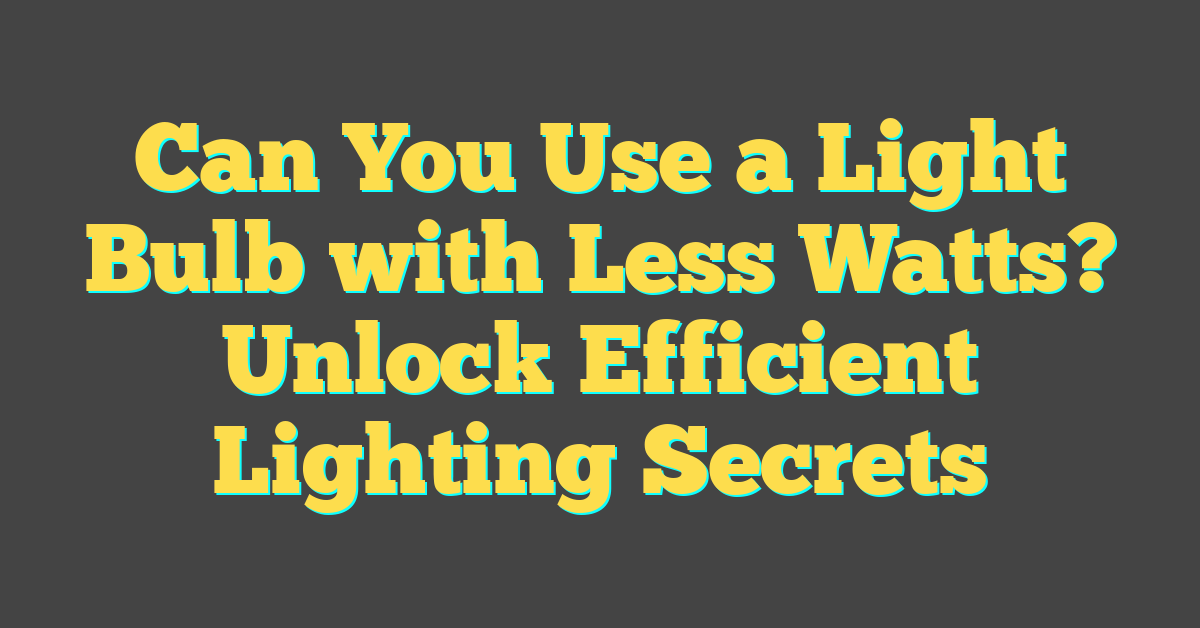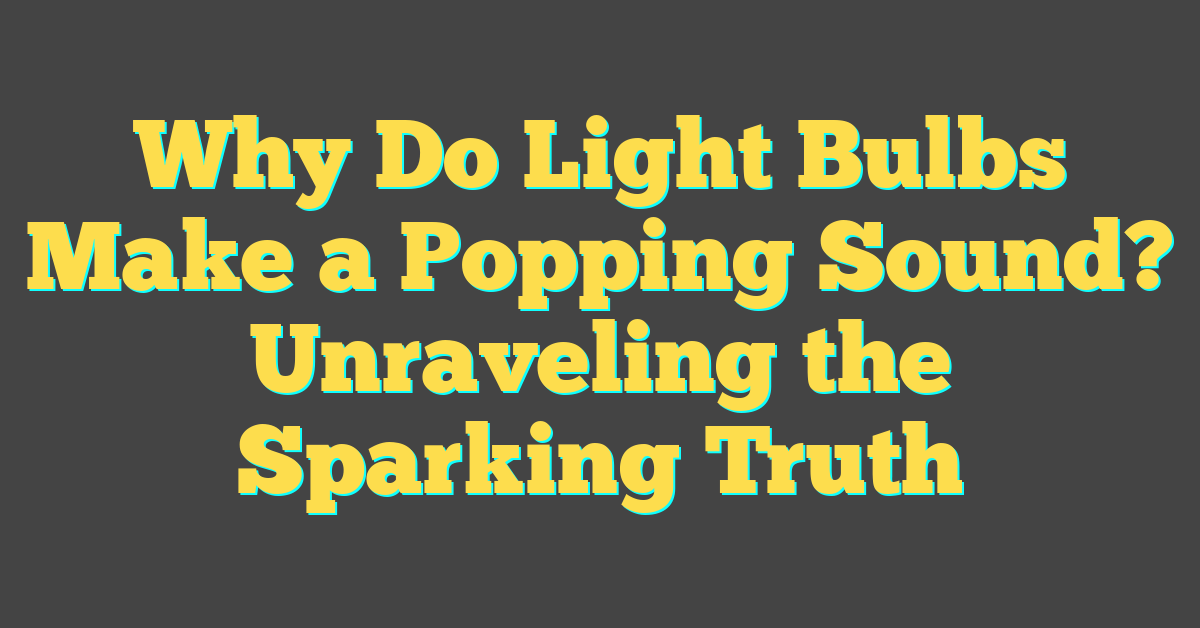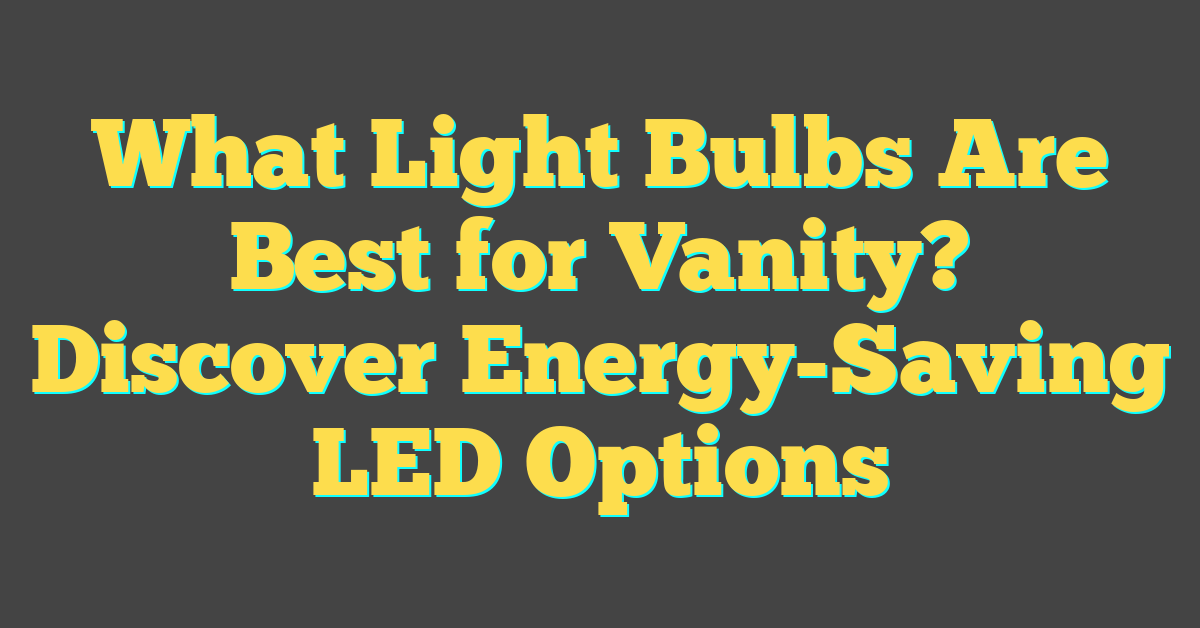Lighting is a significant aspect of your daily life; it affects everything from the mood of your home to the size of your energy bill. Energy-efficient light bulbs have gained popularity as consumers have become more conscious of their energy use and environmental footprint. These bulbs, including LED (Light Emitting Diode) and CFL (Compact Fluorescent Lamp) variations, claim to use less energy and last longer than their traditional incandescent counterparts. Understanding the pros and cons of energy-efficient lighting will help you make informed choices that align with your personal needs and values.


Opting for energy-saving lighting solutions can lower your utility expenses and reduce your household’s impact on the environment. On the flip side, they often come with a higher upfront cost compared to traditional bulbs and may pose unique disposal requirements due to the materials they contain. The nuances of light quality and output, health and safety considerations, and advances in smart lighting technologies each play a role in navigating the shift towards more energy-efficient options. When contemplating a transition to energy-efficient lighting, it’s crucial to weigh not just the potential savings but also the broader implications, including the technical aspects and market trends influencing consumer choice.
Key Takeaways
- Energy-efficient bulbs like LED and CFL use less energy and have a longer lifespan than traditional bulbs.
- While these bulbs offer environmental benefits, they also come with a higher initial investment.
- Light quality, safety concerns, and smart technology integration are important factors in evaluating energy-efficient lighting.
Advantages of Energy-Efficient Light Bulbs
https://www.youtube.com/watch?v=1fRuJavZSoI&embed=true
The switch to energy-efficient light bulbs, such as LEDs, offers you several benefits that go beyond mere illumination. By embracing these bulbs, you not only save energy and reduce costs but also contribute to environmental protection and enjoy a product that’s built to last.
Longevity and Durability
LEDs are prized for their long lifespan and durability. On average, an LED can last up to 25 times longer than traditional incandescent bulbs. This means fewer replacements for you and less waste generated over time.
Energy and Cost Savings
You’ll notice a reduction in your energy bills when you switch to energy-efficient bulbs. These bulbs use up to 80% less energy than traditional ones, which translates to considerable cost savings on your electricity bill over their operational life.
Reduced Carbon Footprint
By consuming less power, energy-efficient bulbs help you lower your carbon footprint. According to the Environmental Protection Agency, if every American home replaced just one incandescent bulb with an LED, collectively we would save enough energy to light more than 2.5 million homes for a year.
Variety and Versatility
Energy-efficient bulbs come in a wide range of shapes, color temperatures, and some are even dimmable. Whether it’s versatile lighting solutions you’re after or seeking alternatives to the traditional look, you’ll find energy-efficient bulbs are flexible for diverse applications.
Comparing Bulb Types
https://www.youtube.com/watch?v=KykS7nj58Oc&embed=true
Before diving into the specifics, it’s important for you to understand that each bulb type varies in energy efficiency, lifespan, and environmental impact. Here’s how LED, CFL, Halogen, and Incandescent bulbs stack up against one another.
LED Bulbs
Light-Emitting Diode (LED) bulbs are known for their longevity and energy efficiency. Using a semiconductor material, they convert electricity to light and are famed for their Energy Star ratings. On average, LEDs last up to 25,000-35,000 hours, and they don’t produce much heat as they emit brightness. LED technology also offers a broad range of colors and brightness levels.
CFL Bulbs
Compact Fluorescent Lamps (CFLs) use drastically less energy than traditional incandescent bulbs and last longer. A downside is that CFLs contain a small amount of mercury, so they require careful recycling once burnt out. They typically warm up to full brightness and can last up to 10,000 hours.
Halogen Bulbs
Halogen bulbs are a type of incandescent that work similarly to traditional bulbs but are slightly more energy efficient. They operate at higher temperatures, which can translate into more heat output. While they may not be as energy-saving as LEDs or CFLs, halogens do provide instant brightness and have a decent color rendering index.
Incandescent Bulbs
Traditional incandescent bulbs are the least energy-efficient option, with much of the energy lost as heat. Although they are often favored for their warm light, these bulbs have a much shorter lifespan than LEDs or CFLs, lasting about 750 to 2,000 hours. Due to their lower energy efficiency, many countries have phased them out in favor of more sustainable options.
« Most Natural Light Bulbs: Illuminating Your Space Healthily and Efficiently
Fluorescent Light Bulb Alternatives: Bright Choices for Eco-Friendly Lighting »
Remember to always check the bulb packaging for the Energy Star label to ensure you’re choosing the most energy-efficient options available to you.
Cost Factors

When looking into energy-efficient lighting, you’ll want to consider two main areas of expense: Initial Investment and Lifetime Expense. These will affect your budget in different ways.
Initial Investment
Your initial cost for energy-efficient bulbs, especially LED ones, may seem steep compared to traditional incandescent bulbs. For instance, upgrading to a 1,100 lumen LED light could run up the cost, with some LED options initially priced as high as $50 per bulb. However, prices are gradually decreasing, making these bulbs more accessible.
Lifetime Expense
Over time, energy-efficient lighting proves its value. The longevity of LEDs reduces the need for frequent replacements. Coupled with decreased energy costs and subsequent utility bill savings, the investment often pays off. For example, a typical energy-saving bulb can last significantly longer than its incandescent counterpart, leading to savings that compound over the bulb’s lifetime.
Efficiency Metrics

When choosing light bulbs, understanding their efficiency is key. You’ll want to compare brightness to power usage and consider energy-saving certifications.
Understanding Lumens and Watts
Lumens measure the amount of light given out by a bulb, essentially its brightness. More lumens mean a brighter light. Watts, on the other hand, indicate how much energy a bulb uses. For efficiency, you’re looking for high lumens with low watts.
- Lumens per Watt (Lm/W): This is a key metric for energy efficiency. It tells you how many lumens of light you get for each watt of power. For example, a bulb providing 800 lumens while consuming 10 watts is performing at 80 lumens per watt.
Energy Star Ratings
Energy Star-rated products meet strict efficiency standards and offer good performance. They are certified for:
Reducing energy consumption: Devices use less power for the same performance.
Cost savings: They can save you money on energy bills due to lower power usage.
Bulbs with the Energy Star label have been tested for brightness (lumens), power usage (watts), color quality, and lifespan. This certification is a trusted mark for energy-saving and performance.
Environmental Impact
https://www.youtube.com/watch?v=BXsWcI3wDR0&embed=true
The transition to energy-efficient light bulbs is a significant step in reducing your carbon footprint and minimizing environmental damage. You’ll discover how these changes affect not only greenhouse gas emissions but also waste management practices.
Reduction of Harmful Emissions
When you switch from traditional incandescent bulbs to energy-efficient alternatives, you’re helping to slash the amount of emissions released into the atmosphere. Energy-saving light bulbs such as LEDs and CFLs (compact fluorescent lamps) are designed to use less electricity to produce the same amount of light. For example, an LED bulb can use up to 80% less energy than its incandescent counterpart. This substantial decrease in energy usage directly results in a lower volume of emissions from power plants, particularly those that burn fossil fuels. The Environmental Protection Agency supports the adoption of these bulbs as part of broader efforts to protect the climate.
Recycling and Disposal
Handling energy-saving bulbs at the end of their lifespan is a critical aspect of their environmental impact. CFLs contain a small amount of mercury, which means they should be recycled properly to avoid contaminating the environment. Fortunately, many localities offer easy options for recycling these bulbs to ensure safe disposal. While LEDs do not contain mercury, recycling them can still reclaim useful materials and reduce waste. By participating in recycling programs, you’re contributing to a more circular economy where products and materials are reused rather than discarded.
Light Quality and Output
https://www.youtube.com/watch?v=cQwxU1syGzk&embed=true
When choosing energy-efficient light bulbs, the quality of light they produce is as important as the energy savings. Factors like brightness, light temperature, and color rendering can significantly affect the atmosphere and functionality of your space.
Brightness and Light Temperature
Brightness is measured in lumens, not watts, which is a common misconception. With energy-efficient lighting, you get a higher lumen output per watt, which means more light with less energy used. For instance, an LED bulb typically provides about 75-80 lumens per watt compared to only 10-17 for an incandescent bulb.
- Bright White vs Soft White:
- Bright white bulbs emit a more vibrant, invigorating light usually with a color temperature of 3000K to 4500K.
- Soft white bulbs feature a warm, more relaxing glow with color temperatures typically around 2700K to 3000K.
Color Rendering and White Light
Color Rendering Index (CRI) is the measurement of how colors look under a light source when compared with sunlight. The higher the CRI (on a scale from 0 to 100), the more natural the colors appear. Energy-efficient bulbs, especially LEDs, have been improving in this respect, with many offering CRIs above 80, which is generally considered good for most indoor residential applications.
- White Light Spectrum:
- Cool White: Emits a more bluish-white light, ideal for task-oriented areas like home offices.
- Warm White: Provides a yellowish-white light, perfect for creating a cozy ambiance in living rooms and bedrooms.
Health and Safety
https://www.youtube.com/watch?v=I_3b4cgAczQ&embed=true
When considering energy-efficient light bulbs, it’s crucial to evaluate how they might affect your health and safety. This section unpacks key concerns, such as potential health effects and electrical safety, keeping your well-being in mind.
Potential Health Effects
Energy-efficient bulbs differ in the types of light they emit and how they may influence your health. Some people report headaches that they attribute to the flicker or the spectrum of light from compact fluorescent lamps (CFLs). LED bulbs, however, are less likely to cause this issue as they typically produce a steadier light.
Moreover, it’s vital to note that CFLs emit a small amount of ultraviolet (UV) light. While the UV exposure from these bulbs is minimal, it’s still a smart idea to use them at a reasonable distance, as excessive UV exposure can have adverse effects on your skin and eyes.
Electrical and Fire Safety
Durability: Energy-saving bulbs are designed to be durable, but it’s crucial to handle them with care. They can break if dropped, and certain types like CFLs contain a small amount of mercury, which requires careful cleanup and disposal.
Heat: While energy-efficient bulbs generate less heat than traditional incandescent bulbs, they still produce some heat. LED bulbs are especially advantageous as they remain cool to the touch, reducing the risk of burns and fires.
Remember, proper installation and usage are key to preventing electrical hazards. Always follow the manufacturer’s guidelines for safe operation.
Technical Considerations

When you’re considering a switch to energy-efficient lighting, it’s important to be aware of technical considerations that could affect your choice. The two main areas you’ll need to think about are the compatibility of these bulbs with your existing fixtures and the impressive advancements in LED technology.
Compatibility with Fixtures
One of your first considerations should be whether your chosen energy-efficient bulbs will work with your current light fixtures. Not all light bulbs are created equal in size and shape, and certain types, especially LEDs, may not fit in older luminaires. This is particularly true for recessed lighting, where the space can be quite tight. Additionally, if your fixtures are connected to dimmers, you’ll need to check if the new bulbs are compatible, as not all energy-efficient bulbs can operate with dimming switches.
Advancements in LED Technology
The technology behind LED lights has come a long way, offering significant performance benefits. Current LED bulbs offer a wide range of color temperatures and brightness levels, often matching or surpassing traditional incandescent bulbs. Moreover, the latest LEDs have improved in terms of their energy to light conversion efficiency, meaning they can produce the same amount of light using much less power. This leap in technology not only helps you save on your energy bills but also reduces your carbon footprint, making it a win-win situation.
Market Trends and Consumer Choice

In the dynamic landscape of lighting, you’ll notice a clear shift as manufacturers increasingly favor energy-efficient options, and government policies push for sustainable choices. Here’s a snapshot of current trends and how they may influence your decision-making.
Popularity of Different Bulb Types
LED Bulbs: LED (light-emitting diode) bulbs have surged in popularity. They are appreciated for their long life and energy efficiency, often outpacing other types on the market. According to the U.S. Department of Energy, LEDs use at least 75% less energy and last 25 times longer than incandescent lighting.
CFL Bulbs: Compact Fluorescent Lamps (CFLs) were once the frontrunners in energy-efficient lighting. While they do use less energy than traditional incandescents, they’ve seen a decrease in popularity due to the longer lifespan and decreasing cost of LEDs. However, some consumers still choose CFLs for certain applications due to their softer light and upfront affordability.
Government Influence and Legislation
U.S. Department of Energy: The Department has rolled out guidelines making it easier for you to understand the benefits of energy-efficient lighting. When choosing LEDs, you’re encouraged to look at lumens rather than watts to gauge brightness, recognizing the superior energy efficiency of LED technology.
Congress: Legislation from Congress has a significant impact on lighting trends. As new laws are passed, such as those setting higher standards for energy efficiency, manufacturers are incentivized to produce more efficient lighting solutions, and less efficient technologies are phased out. This government push further accelerates the shift towards energy-efficient lighting options like LEDs.
Smart Lighting Solutions
https://www.youtube.com/watch?v=vrJM8t_MrPY&embed=true
Incorporating smart lighting into your home can provide both convenience and energy efficiency. Let’s explore how smart bulbs tie into home automation and contribute to a greener lifestyle.
Smart Bulbs and Home Automation
Smart bulbs elevate the traditional lighting experience, allowing you to control illumination through your smartphone or voice commands. You can switch them on or off, adjust brightness, and sometimes even change colors without leaving your couch.
- Ease of use: Control your lights with a mobile app or through voice control with compatible home automation systems.
- Dimming without a dimmer: Most smart bulbs offer dimming capabilities right out of the box, even without a physical dimmer switch installed. This allows you to set the perfect mood and conserve energy.
Energy-saving benefits are significant with smart bulbs. They use LED technology which is known for consuming less power than traditional incandescent bulbs. With the ability to schedule when your lights go on and off, you can ensure that no electricity is wasted, resulting in lowered utility bills over time.
- Scheduling: Set timers to turn your lights on or off at specific times, reducing unnecessary energy use.
- Longevity: Smart LEDs tend to have a longer lifespan, often translating into savings as you won’t need to replace them as frequently.
Remember, while the initial cost of smart bulbs is higher, their dimming features and energy-saving qualities often offset the investment over time. Enjoy the dual benefits of embracing modern lighting technology that aligns with eco-friendly practices.




